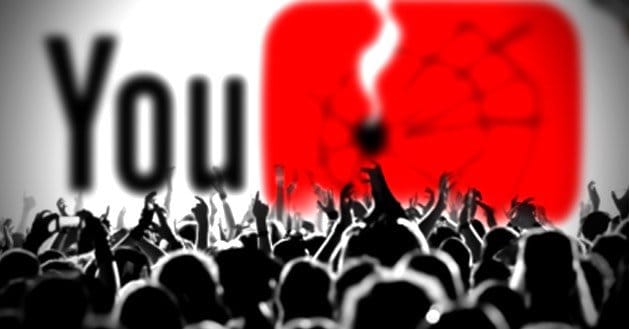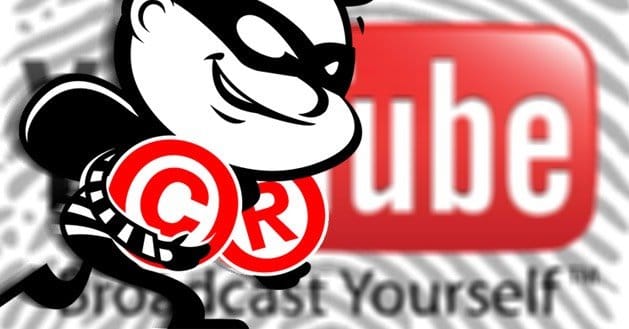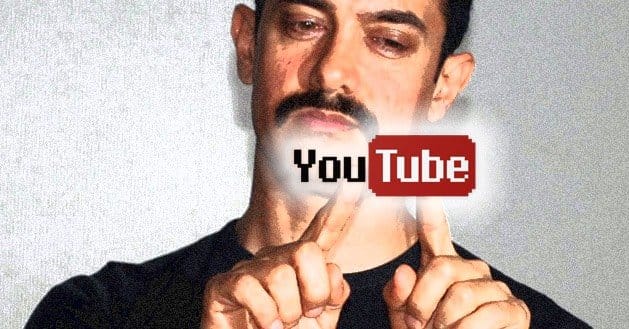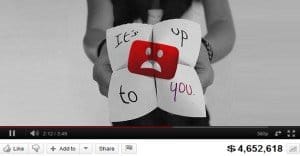 Written by ContentPowered.com
Written by ContentPowered.comFor most people, YouTube is a video hosting site with seemingly infinite possibilities when it comes to watching cat videos, people playing video games, sports bloopers, illegally uploaded TV shows and static images with songs playing. For most people uploading videos, it’s a way to show a few friends what happened at school or what you saw on the way to work. For a few of them, it can earn a few bucks each year. Only the smallest minority rake in serious cash with YouTube. Those who do often use AdSense, the related Google property, to do so. If you want to join the ranks of the top YouTube earners, you likely have some serious work to do.
Improving your Ads
The first place to improve is with your ads themselves. This assumes that you’ve already reached a point where you can become an official YouTube Partner and monetize your videos. If not:
Don’t hesitate to monetize. Generally you’ll be invited to become a YouTube Partner once you have around 1,000,000 channel views, a reasonable daily view count and a decent number of videos. The exact numbers all around vary from case to case. With YouTube, bigger numbers are better.
Use keyword research to target your videos. Just like creating a topic for blog posts, keyword research helps you know what users are looking for in videos, and it helps them find your videos on the subject. High traffic keywords allow you to access the higher value ads.
Optimize video tags to attract higher value ads. This could go under the next section just as easily, but it falls under optimizing your ads as well. Investigate the different options YouTube has to offer. Sometimes all it takes to access better ads is tweaking your keywords.
Don’t saturate your videos with ads. This falls under a bit of user psychology. More ads, past a certain point, means users will be turned off on clicking any of them. Generally, if you’re going to run a video ad for your off-site service, turn off AdSense ads. Conversely, if you’re running AdSense ads on a video, don’t include your own miniature commercial. A call to action at the end is viable, but if you’re including too much in too short a time frame, users won’t click any of it.
Improving your Videos
Better videos means more viewers. More viewers means more subscribers. More subscribers – and more viewers – means more ad impressions and clicks. More impressions and clicks means more profit. Optimize your videos and produce excellent content to maximize your profits.
Create videos people want to see. This is the key to all YouTube success. You can spend thousands of dollars on high production videos all you like, but if the total interested audience for your topic is three guys in a basement in Omaha, you’re never going to earn your money back, let alone turn a profit. Finding a niche with an audience – or building an audience in your niche – is the key to success. Without people, you go nowhere.
Post videos regularly. A schedule does two things. First, it gives users a guarantee of regular content, even if it’s once per week. It gives them something to look forward to. Scheduling is why weekly television is so effective; people can settle down at 8:00 P.M. on a Friday night and know what they’re getting into. Second, a schedule ensures that you’re going to be producing regular content. One of the keys to pulling in the big bucks with YouTube is volume. Earning $0.50 per video isn’t much when you have ten videos. Earning the same per video is much better when you have a library of 1,000 videos. It may seem like an unattainable goal to have a library that large if you’re just starting out, but that’s a Monday-Wednesday-Friday schedule for just one year. In a broad niche with enough variable content, you can easily handle that.
Brand yourself. You can post the same video on two different channels, one with a personal username and one with a brand name, and the brand name will almost definitely perform better. Some people relate better when your name is clearly visible, but a brand is much easier to advertise and grow. Plus, a brand allows you to bring in other people while maintaining the name. It’s worth the time to invest in a brand name early on, so you don’t have to rebrand later.
Create a video intro that’s not obnoxious. Video introductions are a great way to label all of your video content without an intrusive watermark. When you look at some of the newbie attempts at video branding, however, you’ll find ridiculous 10-second-long introductions with spinning text and blaring music. It’s enough to make you close the window before the content even loads. That’s exactly what you don’t want to have happen. Create an intro that’s recognizable without looking low budget, and try to keep it under five seconds long. Remember; most users decide whether they’ll continue watching a video or not in the first ten seconds. Make sure you get to the content quickly, and hook them with that content.
Absolutely avoid copyright issues. Did you know that, excepting very few circumstances, it’s a copyright violation to include a business logo other than your own in a video? Did you know most music requires a paid license, even “Happy Birthday”? Did you know using images from Google Image Search without a creative commons license can earn you a violation? Be very careful with copyright in your videos, because a single violation can ruin your chances of monetization. Even though other popular channels seem to violate freely, saying “but X does it!” isn’t a valid defense.
Invest in the tools of video production, from lighting to editing software. Nothing drives away users quite like low production quality. Buy a good camera, a good microphone and good lighting equipment. Buy and learn to use video production software. Avoid the basic screen transitions and video filters; anything stock looks low quality. Producing quality videos may be a high initial expense, but it will pay for itself in the long run.
Link in the description. Your video description is partially hidden by default, so only the most interested people will be expanding it to check out the details. This is a great place, surprisingly, to include links to your site, Facebook, Google+, Twitter or whatever other sites you want to advertise. Of course, this has to be in addition to other description optimizations.
Include end-of-video call to action boxes. The standard, when you watch serious channel videos, seems to be two boxes with annotation links to related videos, a box that links via annotation to your channel subscription page, and space for some words or an actor encouraging clicking one of the boxes. You can format it however you like, but the basic concept of a post-video call to action is perfect.
Optimize descriptions and titles for SEO. Your video description and your title are the only text associated with your video, unless you implement captions, which aren’t indexed by search engines anyway. So with only these two venues for SEO, you need to make use of limited space. All the same rules apply; minimalist use of keywords, avoidance of tag spam, creating value in the spaces and so forth. A descriptive title, a short description of the video content, links to your pages and any additional information is all you need.
Pick a compelling thumbnail. By default, YouTube selects frames from partway through your video – generally the 25 percent and 50 percent points – to create thumbnails for you to choose. You can also set up custom thumbnails, which will probably be your ideal option. Create a compelling thumbnail that gives some identifying information so users can quickly sort for content they want to see.
Improving your Channel
Beyond your videos, you must think about your channel as a whole. Your channel page is a hub for people watching your videos. People visit your channel page to see what’s new and what’s featured, as well as what you subscribe to and watch. Optimizing this page can have a huge effect on what users click on and what ads they see. Use it to guide them to your popular content, particularly the content with the highest value ads.
Optimize your channel page itself. Few beginners think to change the look and feel of their channel page, but even a few simple changes can make a world of difference. Add social icons, fill out profile information, create a cover photo and change the background color; it all makes your users immerse themselves deeper in your brand.
Use shorter videos as intros to the channel. Users have a hard time justifying the investment of starting a video 10+ minutes long if they don’t already know they like the content produced by the channel. Use shorter videos – under three minutes – to entice and hook new users. In particular, this means a compelling, popular and short video as the featured video on your channel. Once they’ve seen and enjoyed your shorter content, they’ll be more willing to watch your longer videos.
Create series playlists. When you’re running an ongoing series, it’s helpful to create a playlist that lists each episode in order. Create these playlists so users don’t need to hunt for each new video in the series; they can simply watch playlists instead. This further increases view counts, particularly when the playlists autoplay the next video in line. If you have multiple distinct series’ of videos, create multiple playlists.
Implement captions. Closed captions can be generated automatically by YouTube, but the software that creates them is notorious for poor captions. If you think for one moment that you may have visitors who will benefit from captions, create them yourself. You can create a video script and add the captions to your video through your video options menu.
Encourage comments and use their feedback in future videos. YouTube comments have a bad reputation for every kind of hate and trolling imaginable. Even so, it’s still a social platform and it’s entirely possible to cultivate a valuable audience. Encourage them to comment and respond to their comments. Furthermore, ask for suggestions and use their feedback to create future videos.
Create video responses to popular industry videos. Responding to other videos has declined somewhat in recent years, but it can still be a good way to siphon traffic from more popular channels, particularly when the response you make is valuable and interesting.
Offsite Marketing
Any time you’re trying to grow your presence on one site, it helps to leverage your presence on others. Cross-promotion between your website, your blog, your social profiles and YouTube helps encourage users to network throughout each platform and gives further reach to your videos.
Promote your videos in blog posts. Many businesses use YouTube as an afterthought, to host videos they embed in their blog posts for value. When you focus on YouTube, the blog post becomes a tool to promote your video, as well as the other way around. It’s a mutually beneficial relationship.
Promote your videos on social media accounts. Facebook and Google+ work very well to post videos with their robust preview generation. Twitter helps you promote individual videos and blog posts that embed those videos. Instagram and Pinterest are a bit harder to use, but Pinterest in particular can appeal to certain niche video producers, particularly in the DIY crowd.
Promote your video series’ through partner blogs. You aren’t limited to using your videos in your own blog. One common blog sharing technique is to write a post responding to a popular post, in hopes of sharing that post’s audience. You can do the same with a video response, which allows the blogger to then embed the video and write another post commenting on it. You gain the benefit of their audience when they do.
Create compelling ads that point to videos. Your videos can be used as landing pages for particular ad campaigns on other platforms, particularly Facebook. You can use videos in any way you could use a website landing page, and you can even keep track of metrics through YouTube video insights.
Take advantage of these tips and you’ll be able to boost your view and subscriber counts through the roof. With higher views and more subscribers, you can gain access to higher paying YouTube partners and better, more valuable ads. Before you know it, you’ll have a surprisingly high passive income from your videos.







Really a beautiful article, I like it so much.
I’m just thinking now about YT.. Great article..
Excellent tips and trick with detailed instruction. I will implement it to my Youtube channel. Thanks for the great article.
I am also an Adsense publisher. I have some photography websites and engaged YouTube Channel. This post will help me a lot to monetize my contents.